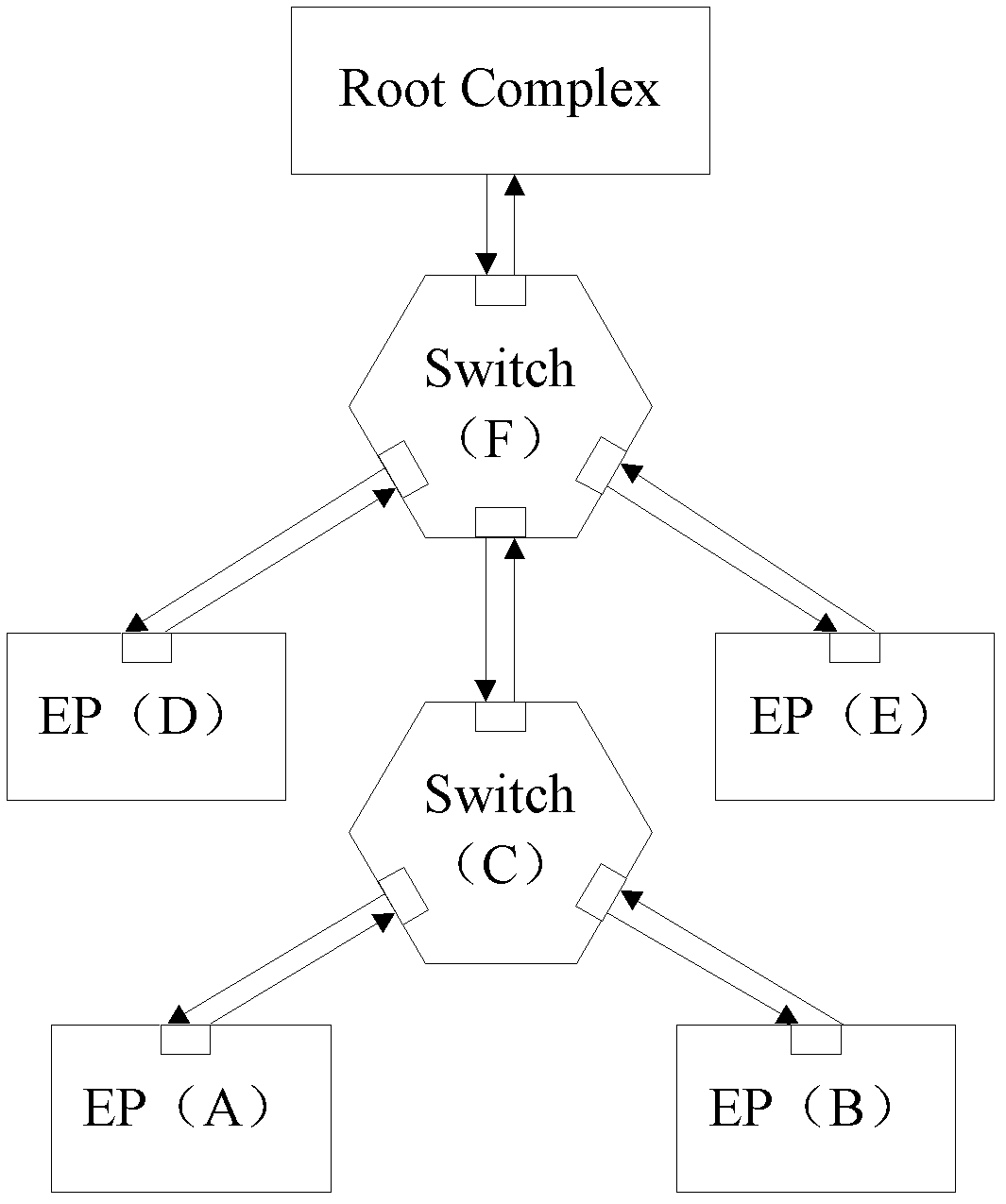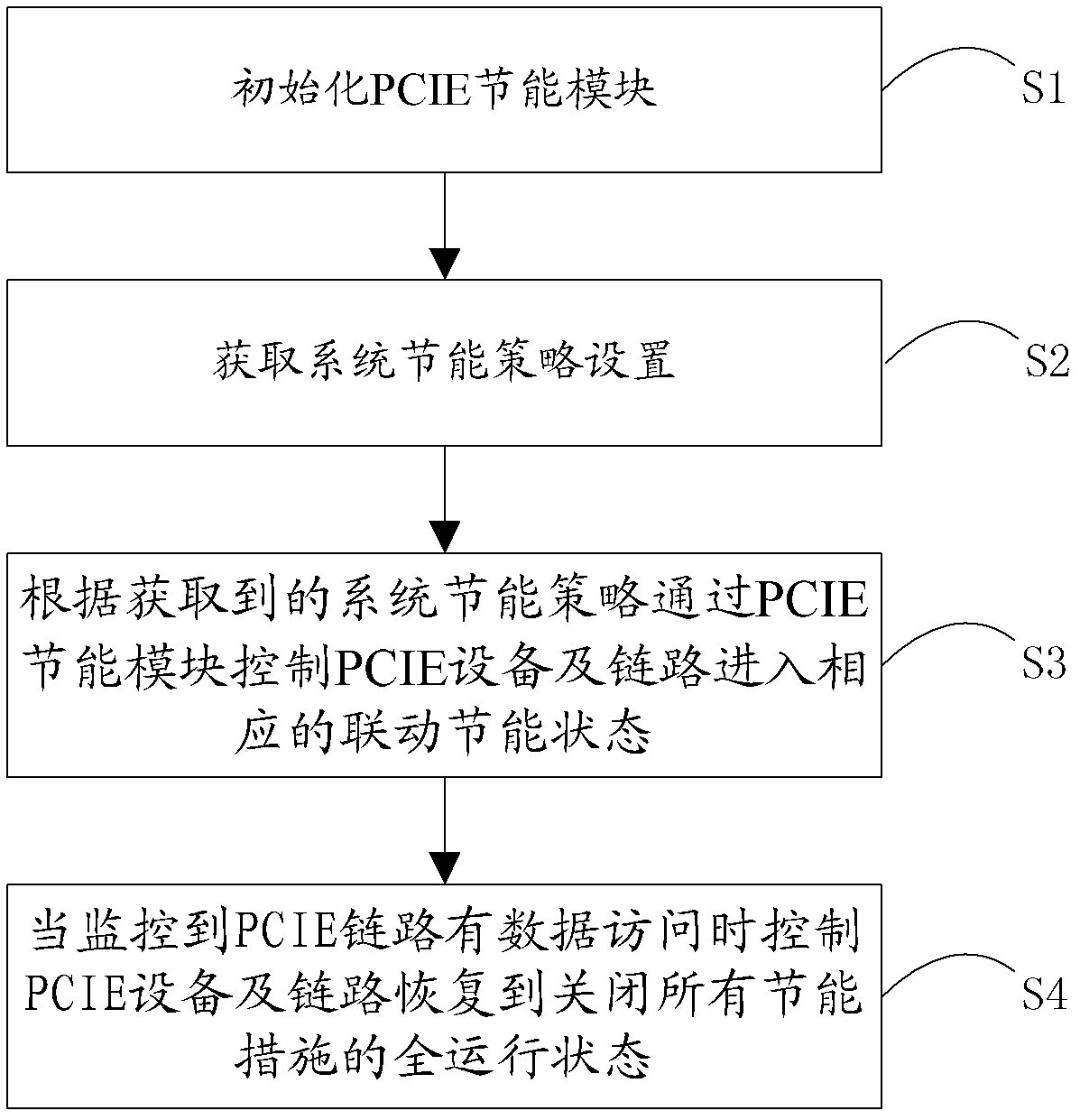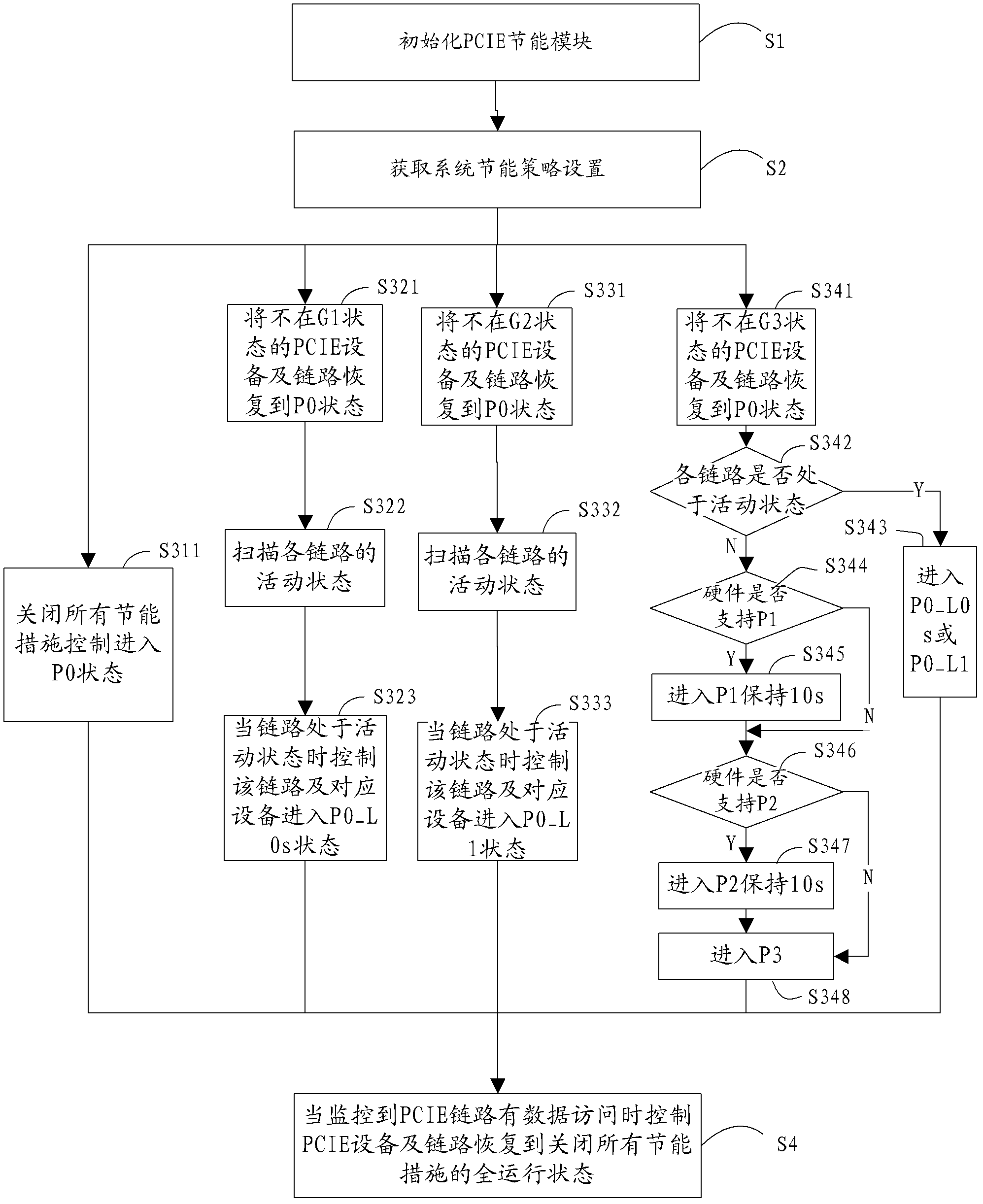Dynamic energy-saving method and device for PCIE equipment and communication system of PCIE equipment
An energy-saving device and equipment technology, applied in energy-saving computing, energy consumption reduction, sustainable communication technology, etc., can solve the problems of low energy-saving efficiency and achieve the effect of improving energy-saving efficiency
- Summary
- Abstract
- Description
- Claims
- Application Information
AI Technical Summary
Problems solved by technology
Method used
Image
Examples
Embodiment 1
[0023] Below, the embodiment of the present invention provides detailed definitions on power management (power management, PM) and link active state power management (active-state power management, ASPM), this definition is only exemplary, in actual use Including but not limited to the above definition, those skilled in the art can also obtain the definition of other states obviously according to the description of the embodiments of the present invention. In the example of the present invention, the definition of the power management state D of the PCIE device and the PCIE link power management state L is specifically shown in the following two tables:
[0024]
[0025] Table 1
[0026] Here D0 state and D3 state (D3hot and D3cold) must be supported by all PCIE devices, while D1 state and D2 state are optional states of PCIE devices, depending on whether the hardware supports these two states.
[0027]
[0028] Table 2
[0029] Among them, the PM can control the PCIE ...
Embodiment 2
[0049] It should be noted that the system energy-saving policy can be set in other levels according to needs, such as three levels of "on", "off", and "energy-saving", and can also be set in other forms, which are not limited here.
[0050] Exemplarily, the following specifically describes the process of controlling the PCIE device and link to enter the corresponding linkage energy-saving state in step S3 in this embodiment. The system energy-saving strategy includes: non-energy-saving state G0, light energy-saving state G1, and moderate energy-saving state G2 and high energy-saving state G3. Such as image 3 Shown:
[0051] In step S311, the obtained system energy saving policy is set to the non-energy saving state G0, and all energy saving measures are turned off to control the PCIE device and the link to enter the P0 state.
[0052] In step S321, the obtained system energy saving policy is set to the light energy saving state G1, and the PCIE devices and links not in the ...
Embodiment 3
[0068] Figure 4 The structure of a PCIE device dynamic energy saving device provided by the third embodiment of the present invention is shown, and only the parts related to the embodiment of the present invention are shown for convenience of description.
[0069] A kind of PCIE equipment dynamic energy-saving device, described device comprises:
[0070] A policy setting acquisition unit 102, configured to acquire system energy saving policy settings;
[0071] The energy-saving state control unit 103 is configured to control the PCIE device and link to enter a corresponding linkage energy-saving state through the PCIE energy-saving module according to the obtained system energy-saving policy.
[0072] Further, as a preferred embodiment, the device also includes:
[0073] The module initialization unit 101 is configured to initialize the PCIE energy-saving module.
[0074] Further, as a preferred embodiment, the device also includes:
[0075] The device link restoration un...
PUM
 Login to View More
Login to View More Abstract
Description
Claims
Application Information
 Login to View More
Login to View More - R&D Engineer
- R&D Manager
- IP Professional
- Industry Leading Data Capabilities
- Powerful AI technology
- Patent DNA Extraction
Browse by: Latest US Patents, China's latest patents, Technical Efficacy Thesaurus, Application Domain, Technology Topic, Popular Technical Reports.
© 2024 PatSnap. All rights reserved.Legal|Privacy policy|Modern Slavery Act Transparency Statement|Sitemap|About US| Contact US: help@patsnap.com










